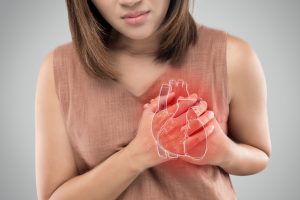
Most people think a heart attack is easily identifiable: severe chest pain and shortness of breath. And although most people may suffer heart attacks with these symptoms, about a quarter don’t.
Rather, they experience what has come to be known as “atypical” symptoms.
These symptoms include breathing problems, abdominal pain, and extreme fatigue. Symptoms that may be attributable to other conditions or causes, and not necessarily heart attacks or something that would get people into emergency rooms.
Recent research published in the European Heart Journal – Acute Cardiovascular Care found that about 1 in 4 people experience these “atypical” symptoms and are less likely to receive emergency care.
By extension, they are more likely to die within 30 days than those who experience chest pain during a heart attack.
That wasn’t the only study that recently challenged how people and physicians should think about heart health.
Another study, for example, highlighted the importance that race and income play in heart attack risk and outcome.
Research recently presented at a virtual meeting of the American College of Cardiology showed that while black and white Americans from well-resourced neighborhoods had similar health outcomes following a heart attack, black Americans living in under-resourced neighborhoods were significantly more likely to die than white Americans living in under-resourced neighborhoods.
Another recent study showed that black Americans were more likely to exhibit more severe heart attack risk factors at a younger age than their white counterparts.
The researchers from each study suggest that this information may change the way both individuals and doctors approach healthcare.
These findings can help re-enforce the importance of a heart-healthy lifestyle that includes activity and healthful food choices. They can also help you identify a potential heart attack that may not necessarily “feel like” it.